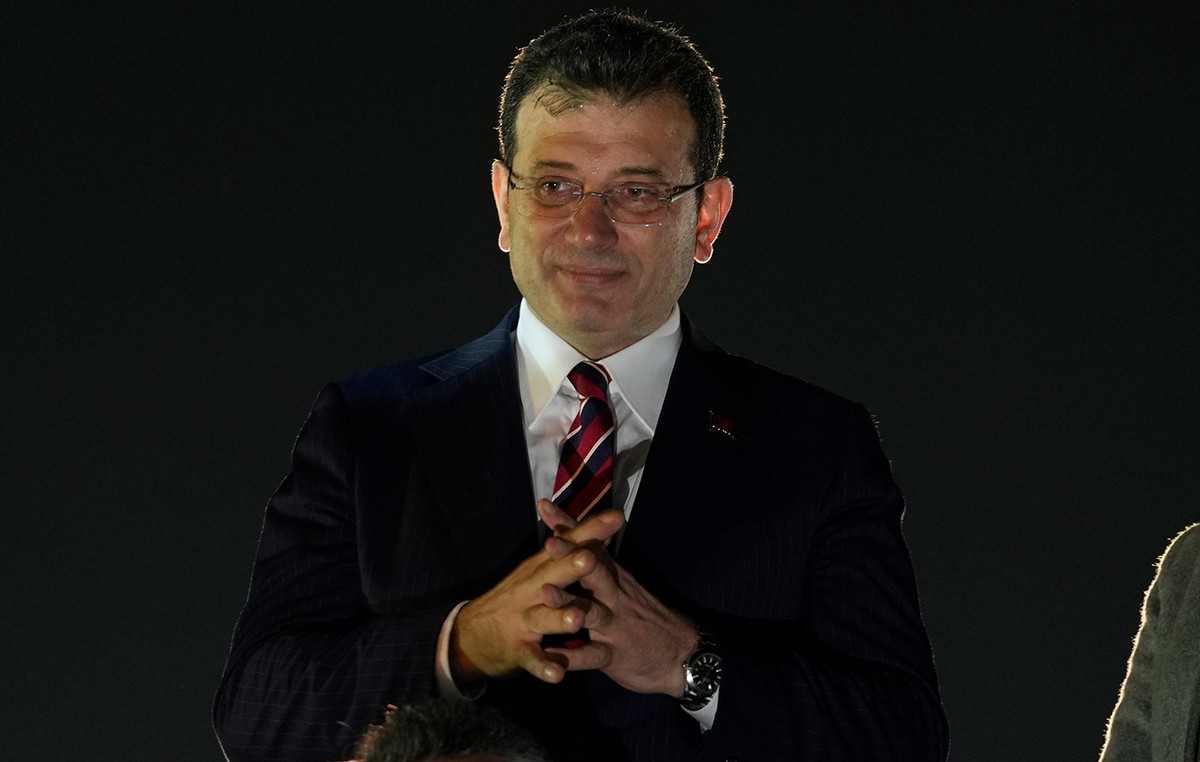- The US dollar is trading steady in a tight range on Monday.
- Traders are preparing for a historic week in which no less than five of the main central banks will communicate their monetary policy.
- The US Dollar Index is around 103.00 and is expected to remain stable.
The US dollar (USD) is experiencing a Zen moment on Monday, before this week's turmoil intensifies with no less than five central banks issuing monetary policy statements. The first and most important will be that of the Bank of Japan (BoJ), on Tuesday, and the second, that of the US Federal Reserve, on Wednesday. Both meetings will be crucial: The BoJ is set to abandon decades of negative interest rate policy while trying not to disrupt markets, and the Fed will give clues on the outlook for interest rates after recent inflation figures made investors nervous. the markets.
Monday's US economic calendar is light. Preliminary March Purchasing Managers' Index (PMI) data will be released on Thursday. Right at the end of the week, no less than three Fed members, including Fed Chair Jerome Powell, will deliver speeches and statements that could further guide markets should Wednesday's rate decision not be clear enough for the markets.
Daily summary of market movements: Central banks
- Vladimir Putin secured another term as Russian president on Sunday. Despite Putin's comments that peace talks with Ukraine will not take place, China has said it wants to start peace talks.
- The BoJ is expected to move its official interest rates away from negative for the first time in decades. Markets appear to be anticipating this decision, with Japanese stocks up more than 2% ahead of Tuesday night's meeting.
- Other central banks this week include the Reserve Bank of Australia (RBA) on Tuesday, the Swiss National Bank (SNB) on Thursday and the Bank of England (BoE).
- The People's Bank of China (PBoC) unexpectedly set USD/CNY on Monday at 7.0943, while 7.1993 was expected. Analysts thought the PBoC was easing after it surprised with a weaker exchange rate on Friday. The currency markets are not really reacting to the fixing.
- Monday's US data calendar begins at 14:00 GMT with the NAHB housing market index for March. A contraction was recorded in February, with 48 points, and the same reading is expected for March.
- The US Treasury Department will award a 3-month bill and another 6-month bill at 15:30 GMT.
- Stocks open the week in green in all sectors. Special attention to the Japanese Nikkei and Topix, both with increases of more than 2% for this Monday.
- According to CME Group's FedWatch tool, expectations of a Fed pause at the March 20 meeting stand at 99%, while the odds of a rate cut stand at 1%.
- The 10-year US Treasury yield is trading around 4.30%, continuing its rise from last week.
US Dollar Index Technical Analysis: Prepare for the (un)known
The US Dollar Index (DXY) faces two major developments this week that could lead to increased Dollar volatility, albeit with the risk of stalling at the end of the roller coaster. Although the BoJ is set to make a game-changing rate decision and the Fed will need to be clearer to calm market jitters, it might not actually move the needle much on the charts.
The BoJ rate change has been overly communicated and talked about since December last year, while markets have become accustomed to the constant reassessment of when that initial rate cut by the Fed might occur.
To the upside, the 55-day SMA at 103.46 is again under some pressure, just like on Friday. Not far above, there is a double barrier with the 100-day SMA near 103.63 and the 200-day SMA near 103.70. Depending on the catalyst that drives DXY higher, 104.96 remains the key level on the upside.
In the event that the central bank meetings do not take place, the dollar is expected to relax. In this scenario, declines seem inevitable once markets once again anticipate a Fed rate cut in June, with 103.00 and 102.00 as the next levels. Once there, the way is open for another leg down to 100.61, the 2023 low.
Frequently asked questions about central banks
What does a central bank do?
Central banks have a key mandate to ensure price stability in a country or region. Economies constantly face inflation or deflation when the prices of certain goods and services fluctuate. A constant rise in the prices of the same goods means inflation, a constant fall in the prices of the same goods means deflation. It is the central bank's job to keep demand in line by adjusting its interest rate. For the largest central banks, such as the US Federal Reserve (Fed), the European Central Bank (ECB) or the Bank of England (BoE), the mandate is to keep inflation close to 2%.
What does a central bank do when inflation is below or above the expected target?
A central bank has an important tool to raise or lower inflation: modify its reference interest rate. At pre-communicated times, the central bank will issue a statement with its reference interest rate and give additional reasons why it maintains or modifies it (cuts or raises it). Local banks will adjust their savings and loan rates accordingly, which in turn will make it harder or easier for citizens to make a profit on their savings or for companies to borrow and invest in their businesses. When the central bank substantially raises interest rates, we speak of monetary tightening. When you reduce your reference rate, it is called monetary easing.
Who decides monetary policy and interest rates?
A central bank is usually politically independent. Members of the central bank's policy council go through a series of panels and hearings before being appointed to a position on the policy council. Each member of that council usually has a certain conviction about how the central bank should control inflation and the subsequent monetary policy. Members who want a very loose monetary policy, with low rates and cheap loans, to substantially boost the economy, while settling for inflation slightly above 2%, are called “doves.” Members who prefer higher rates to reward savings and want to control inflation at all times are called “hawks” and will not rest until inflation is at 2% or just below.
Is there a president or head of a central bank?
Typically, there is a chairperson who leads each meeting, has to create a consensus among the hawks or doves, and has the final say when votes need to be divided to avoid a 50-50 tie on whether to adjust current policy. The president will give speeches, which can often be followed live, in which he will communicate the current monetary stance and outlook. A central bank will try to push its monetary policy forward without causing wild swings in rates, stocks, or its currency. All central bank members will channel their stance toward markets ahead of a monetary policy meeting. A few days before a monetary policy meeting is held and until the new policy has been communicated, members are prohibited from speaking publicly. This is what is called the silent period.
Source: Fx Street
I am Joshua Winder, a senior-level journalist and editor at World Stock Market. I specialize in covering news related to the stock market and economic trends. With more than 8 years of experience in this field, I have become an expert in financial reporting.







